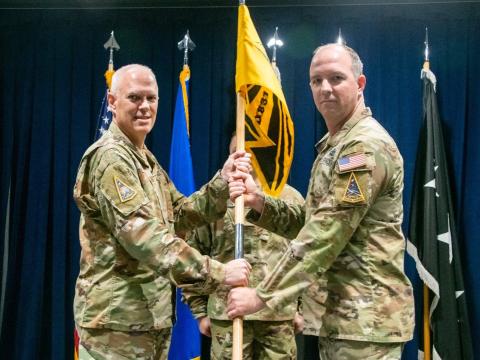Disruptive by Design: Human Geography and Military Competition
The demands of great power competition, as espoused in the 2018 National Defense Strategy and follow-on documents, place a premium on a different kind of intelligence.
Military intelligence technologies offer a host of service-level tools and national assets that are imperative to successful operations. But the demands of great power competition, as espoused in the 2018 National Defense Strategy and follow-on documents, place a premium on a different kind of intelligence. While knowing enemy activity and capabilities remains essential, understanding the everyday needs and attitudes of the populations over which the United States and its allies are competing becomes critical. China and Russia coerce contested populations and threaten them with domination. Under such intense pressure, what incentives can the United States and its allies offer that would invigorate these people and nations to resist coercion and stand up to appeasement?
The intelligence that must be understood is that of human geography, which includes people and their relationships to their societies, cultures, economies, and how these relationships interact across physical space. Human geographers collect and analyze this information to support the goals of the social sciences, marketing, business and industry. By using this information to support military competition among contested populations, military planners will be better positioned to allocate the right resources to the right location to achieve optimal influence effects.
How, then, should intelligence professionals collect and analyze this information? Repurposing current intelligence tools is one option, but this risks information overload; it would generate so much raw data that intelligence professionals would be hard-pressed to turn it into useful intelligence for planners and commanders. Instead, the military should consider using the same data analytics tools used by human geographers to drastically simplify the problem.
Human Geography Data Analytics (HGDA) contextualizes myriad data sources pertaining to the attitudes, behaviors and demographics of surveyed populations to rapidly produce actionable information for decision makers. By correlating this data according to the discrete needs of the user, the ocean of information is transformed into a single drink. While currently in use by social scientists for academic study and by businesses for marketing and sales, HGDA tailored for military purposes can provide commanders with the predictive power needed to optimize operations in support of great power competition.
A small subset of companies already tailors HGDA to the needs of the national security community. One such company, Fraym, integrates satellite imagery, remote sensing and voluntary data to visualize the human terrain down to the square kilometer. This allows analysts to generate heatmaps indicating differences in behavior and perceptions of the observed populations. Another such company, NSI Incorporated, uses HGDA to conduct stability model analysis, allowing users to identify indicators of faltering economies and sources of political instability. Other companies offer variations on this theme, and the military has the option of generating its own HGDA platforms.
The applications of HGDA to intelligence activities are many and varied. HGDA can assess local attitudes toward adversaries to better inform site selection for expeditionary advanced bases; anticipate risks of violence and political strife to inform stability operations; shape and assess influence activities to maximize their effects among targeted populations; understand health risks to inform humanitarian assistance operations; and many others.
While highly capable and exquisite tools assist the efforts of intelligence professionals, the demands inherent in understanding contested populations risk information overload. HGDA can take voluminous amounts of data, analyze and contextualize it, and create visualizations that can usefully inform planning and operations. Currently existing HGDA services and those that might be developed by the U.S. Defense Department can offer indispensable intelligence advantages during the conduct of competition activities.
Brian Kerg is a Marine Corps officer and writer. He is a nonresident fellow at Marine Corps University’s Brute Krulak Center for Innovation and Creativity and a military fellow for the College of William and Mary’s Project for International Peace and Stability. Follow or contact him on Twitter @BrianKerg.




Comments